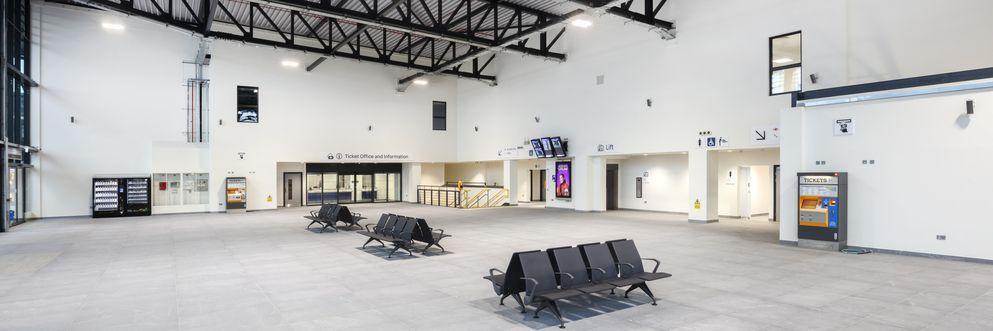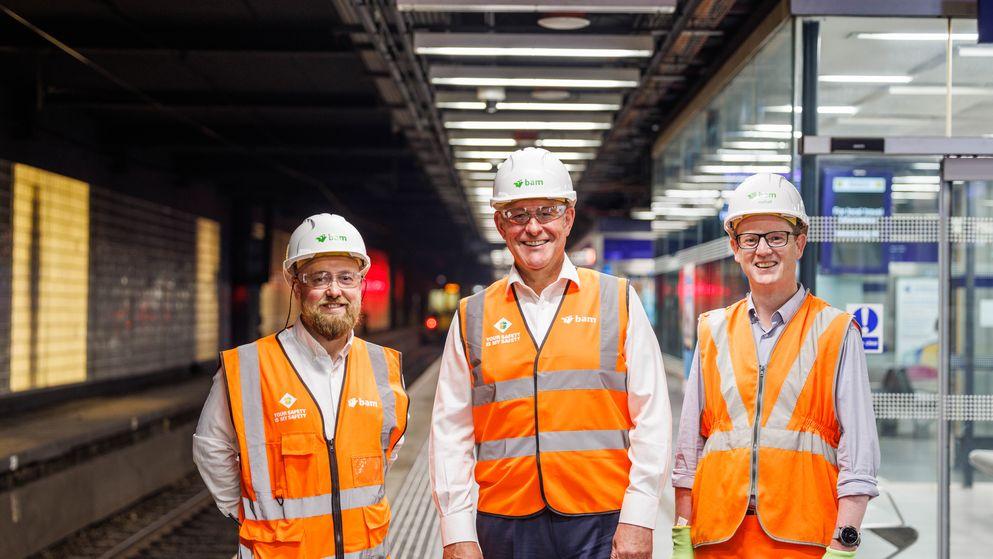
Transforming Sunderland Station
Transforming Sunderland Station
Following the opening of Sunderland Train Station’s new entrance on the 8th of December, which was built by BAM, construction project manager Craig Madge, and civils project manager Paul Abraham share their views on why this has been such an exciting project to lead.
Q. Can you explain a little bit about the Sunderland station project and your roles?
Paul: As part of the work to transform Sunderland Train Station, the team at BAM has been working on building the new southern entrance. It features a large glass wrap-around design and includes a new ticket office and reception as well as several areas designed to improve the customer experience, such as new public toilets, retail space, cafes, and comfortable waiting areas. It also features a new mezzanine level with office space reserved for railway industry staff.
Craig: Coming from the North East of England, it’s been really exciting to take on the role of Project Manager of Construction. The new station is really important for the city, there’s lots of regeneration happening across Sunderland and the city needs a really good entrance.
Paul: I have a background in rail industry projects and it’s great to work on a station building transformation like this. The new station here in Sunderland will improve the journeys of the two million people who use it each year.

Paul Abraham & Craig Madge with BAM COO John Wilkinson
Q. What has been the most exciting element of the job? Were there any standout moments?
Craig: Working on a project so close to home has been a really exciting part of the job. This is because we have worked closely with key stakeholders within the local area, such as Sunderland City Council, and I have enjoyed getting to know those involved.
I am a regular user of the station, so that has come in handy when overseeing the project. I have made sure I bring local knowledge to the project – for example, making recommendations as to what supplier to use for materials.
The highlight of the project has been working closely with Sunderland College to support local students. During the construction of the station’s entrance, we provided a joinery student from Sunderland College with a work experience placement. We were able to offer him hands-on experience on a real construction project, which was really rewarding. He was supported on site by one of our local subcontractors, KT Joinery. It’s rewarding to bring forth new talent into the industry.
Paul: We also really enjoyed working with local schools. 120 children from Grange Park Primary School, Sandhill View Academy, and South Hylton Primary School designed some fantastic artwork for the site hoardings. Sunderland City Council and Sunderland BID will display these six artistic masterpieces in a permanent home inside the new station building.
Q. Were there any particular challenges during the construction and if so, how did you overcome them?
Paul: The main challenge during the construction was working above a live railway. Given we were renovating an existing train station, we had to build around current infrastructure and ensure that we retained, and most importantly protected, the existing concourse.
To help solve this, the construction team worked during the night not only to avoid disruption to train schedules but as a safety precaution to ensure that we removed any risk of an accident on a busy railway line.
The live railway line also impacted the construction of slabs on the ground because there were limitations on the weight of materials. This was another factor we had to be mindful of during construction so that we did not disturb the live railway line underneath.
Q. Were any local materials or suppliers used during the project?
Craig: This was a key priority, as we wanted to limit our carbon footprint as much as possible to fit with our sustainability strategy. We had measurements in place to monitor social value return, and we actually achieved 38.9% social value return on the scheme.
For example, the steel frame sections we used for the train station entrance were sourced from a local fabricator, Harry Marsh Engineers, and only took six minutes to get to site. We transported 180 tonnes of steel to site in nine deliveries – so sourcing this locally really helped us reduce our overall carbon footprint.

